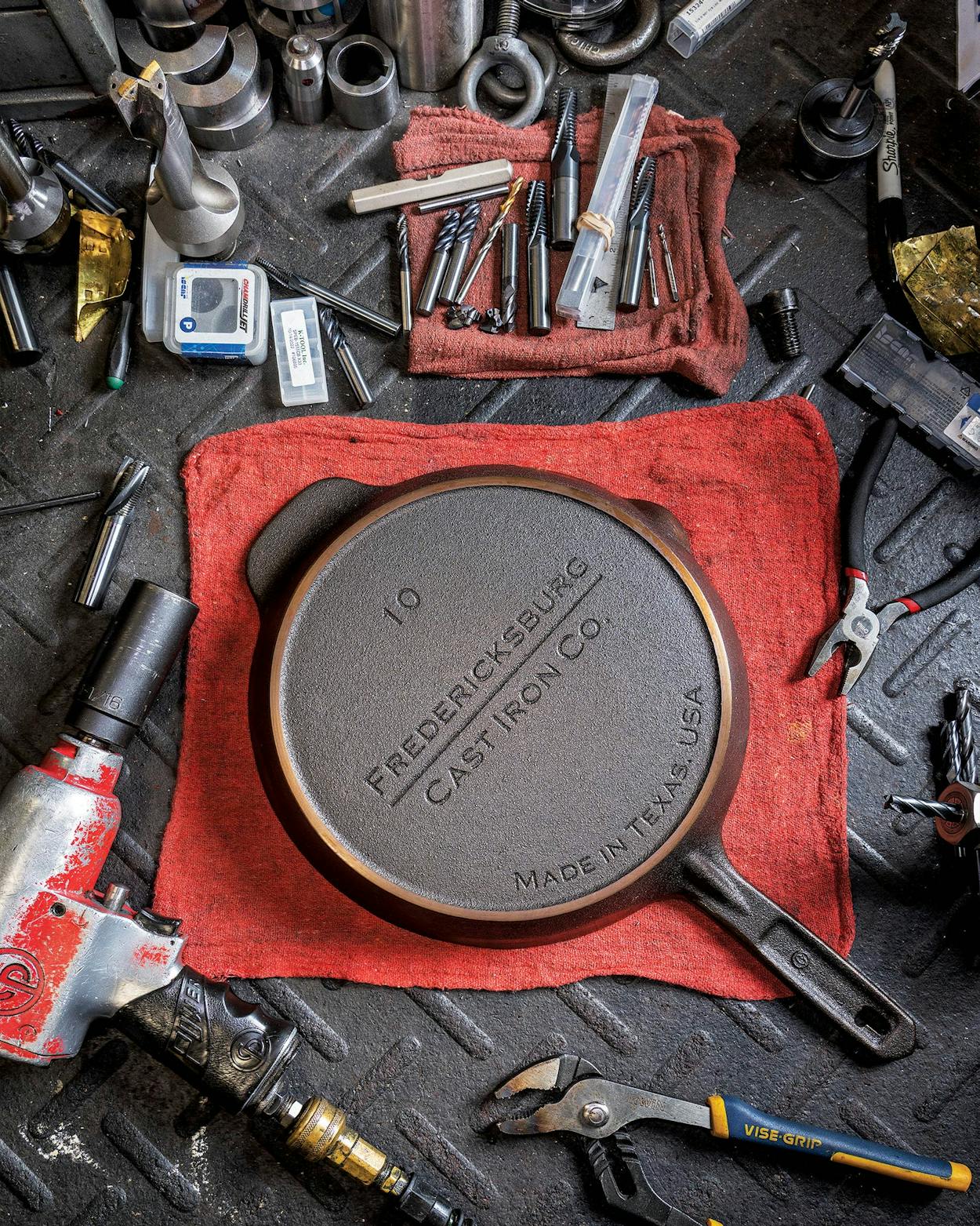When Jay Mallinckrodt, head of machining manufacturer Heartland Enterprises, brought home a prototype for a cast-iron skillet two years ago, his wife and business partner, Heather, put it to the ultimate test: a family blueberry cake recipe going back six generations. It passed. The smooth surface prized by many cast-iron enthusiasts had done its job. The couple had found another use for their shop, which had grown quiet during the pandemic, and launched Fredericksburg Cast Iron around the $160 ten-and-a-half-inch skillet, which is made using a ten-step process.
Texas Monthly: What was the process like after you decided to make cast-iron skillets?
Jay Mallinckrodt: We formed Fredericksburg Cast Iron Co. as a separate business: it contracts with Heartland to machine-make the product. We had the equipment and a group of guys who could do the work—and they’ve actually far exceeded our expectations. We also had a preexisting relationship with a foundry over in Corsicana to do the initial sand-mold casting. They sent the first prototype over, and it was like sixteen pounds. My goal was to get it down to six and a half or seven pounds. So that took some trial and error, and I questioned my decisions, as one does with every new business. Once we nailed the design and the finish, we sold the product online through limited releases for the first six months. They almost immediately flew out of stock.
Heather Mallinckrodt: We actually found a Reddit thread people created on how to secure a pan. Someone suggested they add one to the cart ahead of time, and when the limited release went live, they could snatch it within seconds.
TM: Were you surprised by the response? How has it scaled over time?
JM: I don’t know if I fully understood the passion there is about cast iron. You talk to these guys around a fire with a couple beers, and there’s a debate. Some are like, “Never wash a cast iron!” Others say, “It’s an old wives’ tale. I use soap all the time.” Then there’s someone saying, “I’ve got one from my grandma or my great-grandma.” So right out the gate, there’s interest. The year 2022 was our first full year, and in the fourth quarter, around Christmas season, we did about fifty percent of our sales. So I think it’s a big holiday product. And now we’re sending about thirty-five percent of the inventory out of state. It’s about a twelve-week lead time from the foundry, so we try to keep about twenty-four weeks of inventory—that usually gives the foundry enough time to prepare the next round.
TM: What makes you most excited about this product and the response?
HM: What has been most fun about it is it’s just such a unifying product for people. Everybody has a story from their grandmother or parents. We had people texting pictures of their dinners. There was a woman down the street who texted Jay, “I have a real problem because the kids are fighting over who gets it out of my will.”
TM: Why do you think cast-iron cookware is having a renaissance in the U.S.?
JM: Cast iron kind of jumped a generation. When I was growing up, my mom liked to cook; she liked to have dinner parties and people over, but we didn’t have any cast iron in the house. I think the baby boomers moved away from them—they were moving around, there was new technology, and they went away with it. But we started using them again with our family. I think younger people are seeing the benefits of having heirloom quality stuff. They’re more into the experience and the idea of passing things down again. And people who have that legacy stuff from their grandparents are more interested in preserving it as art or decor, so they want something new—though you can use these things forever.
TM: Is Fredericksburg Cast Iron Co. expanding its line of products?
JM: We do have a second product available now, the Number Fourteen Comal, which came into our market in the late summer of 2022. It’s essentially a cast-iron griddle. We use it all the time on our regular cooktop for pancakes, tortillas, browning ground beef, or just cooking a whole pack of chicken breast. You can also throw it in the smoker or on the grill. Now we’re working on our Number 12 skillet, which is the next size up, and the Number Eight skillet, which is the next size down. I hope we have those ready for our marketplace by early spring. Then we’ll move into the dutch oven family.
TM: Have you partnered with any retail outlets?
JM: Our first and longest-term retailer has been Blackchalk Home and Laundry in town. It’s been with them about a year, and they’ve sold a ton of our products. We don’t want to sell in the mass market or have a bunch of locations. Our online store will remain the main retail space because we have thirty thousand square feet here, and it’s easy to package and ship from this facility. So we want to find some smaller local partners in Fort Worth, Dallas, Houston, San Antonio, and Austin.
TM: What’s your core mission?
JM: This product is about bringing people together over food and the idea that if you take care of it, it’s gonna last forever. The most important piece is how it all kind of comes together: how you use it and how you spend time with your loved ones and friends.
This interview has been edited for clarity and length.
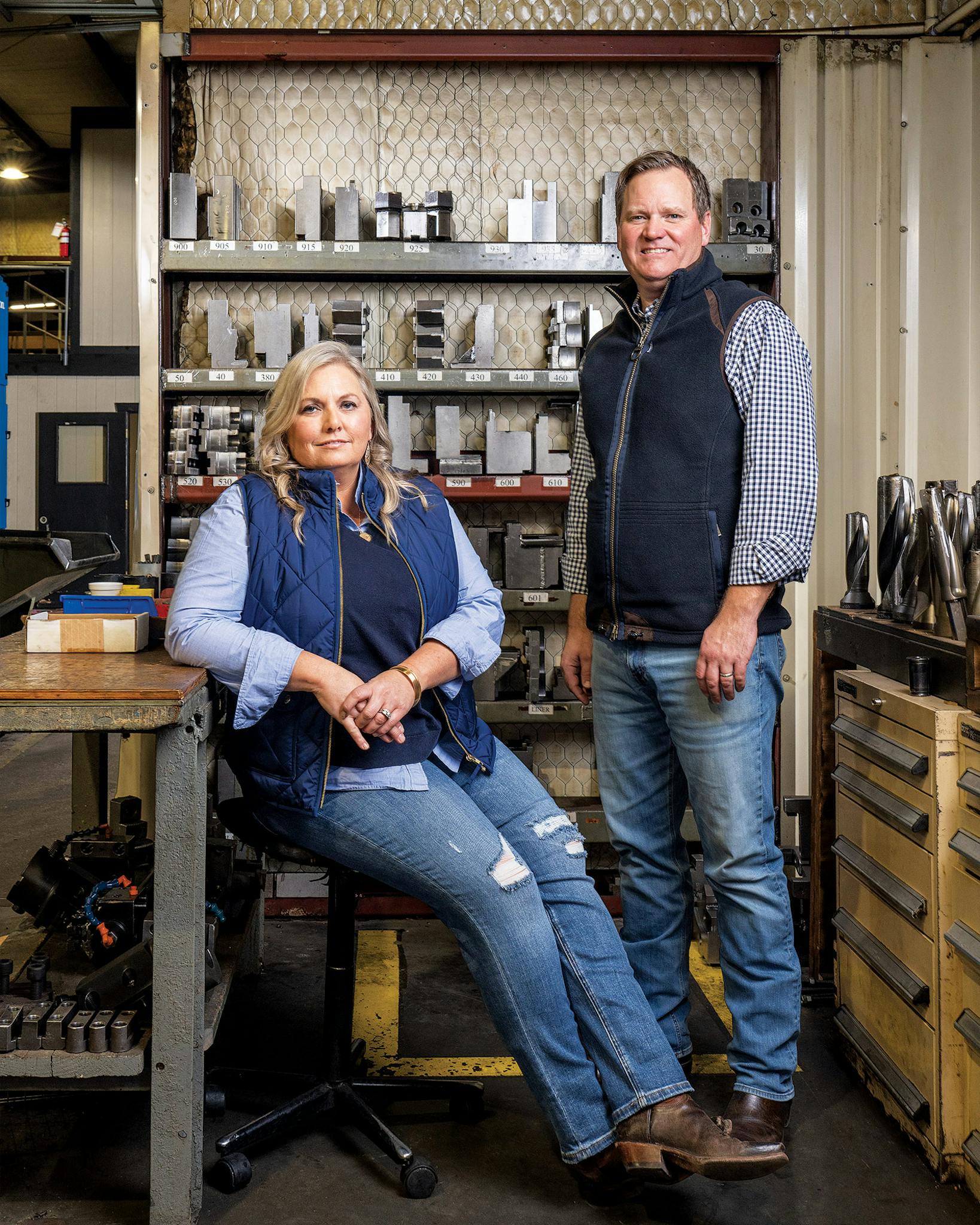
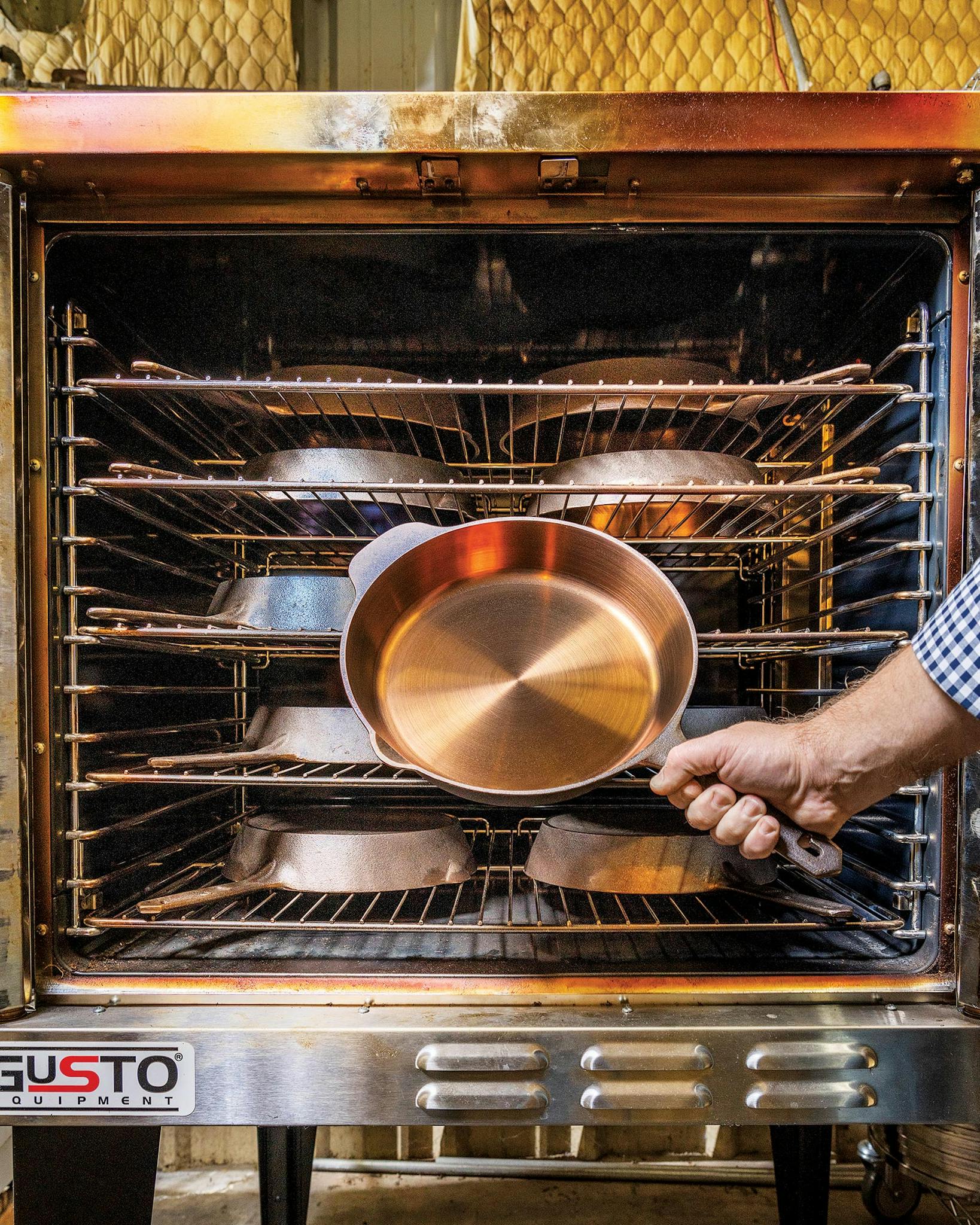
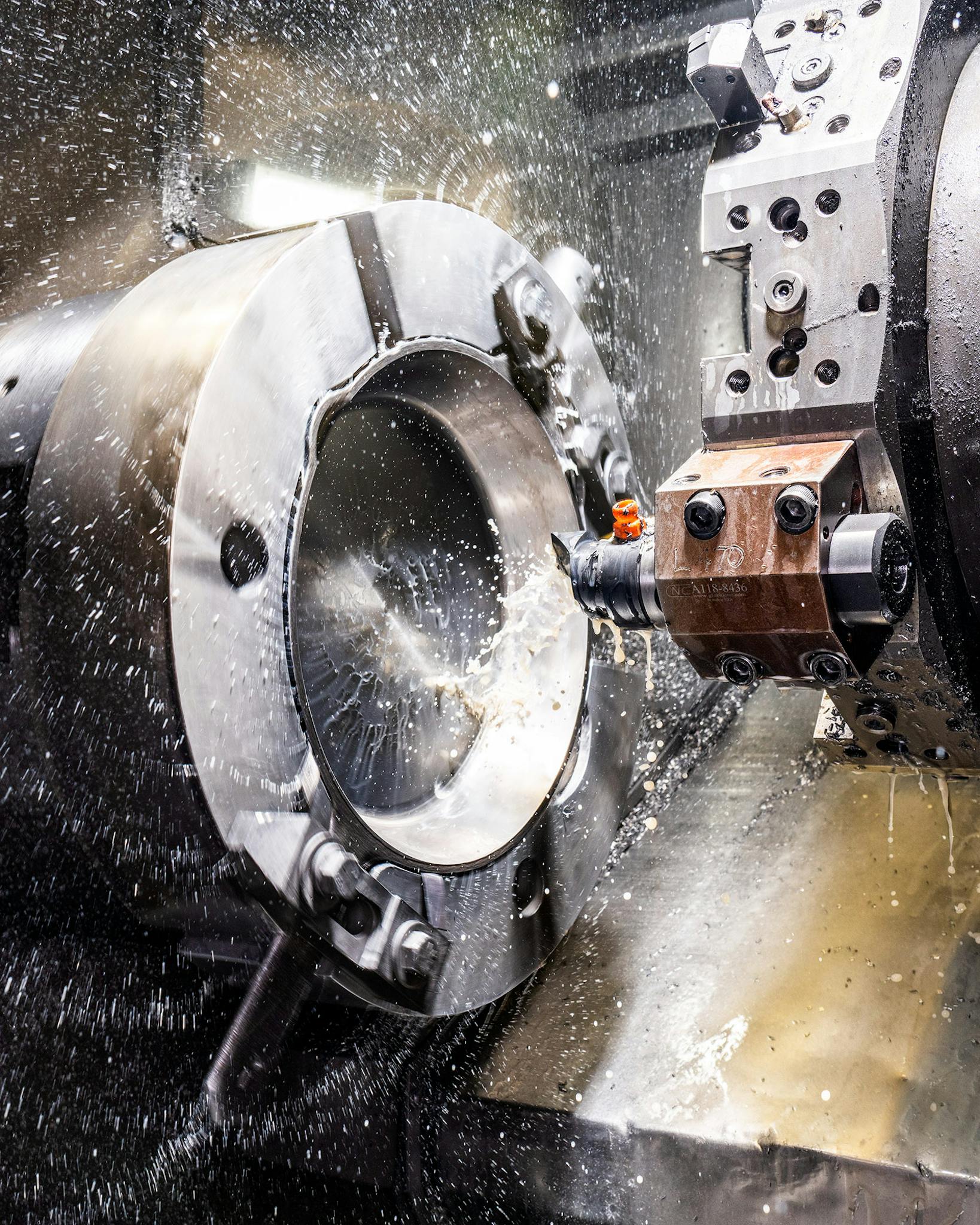
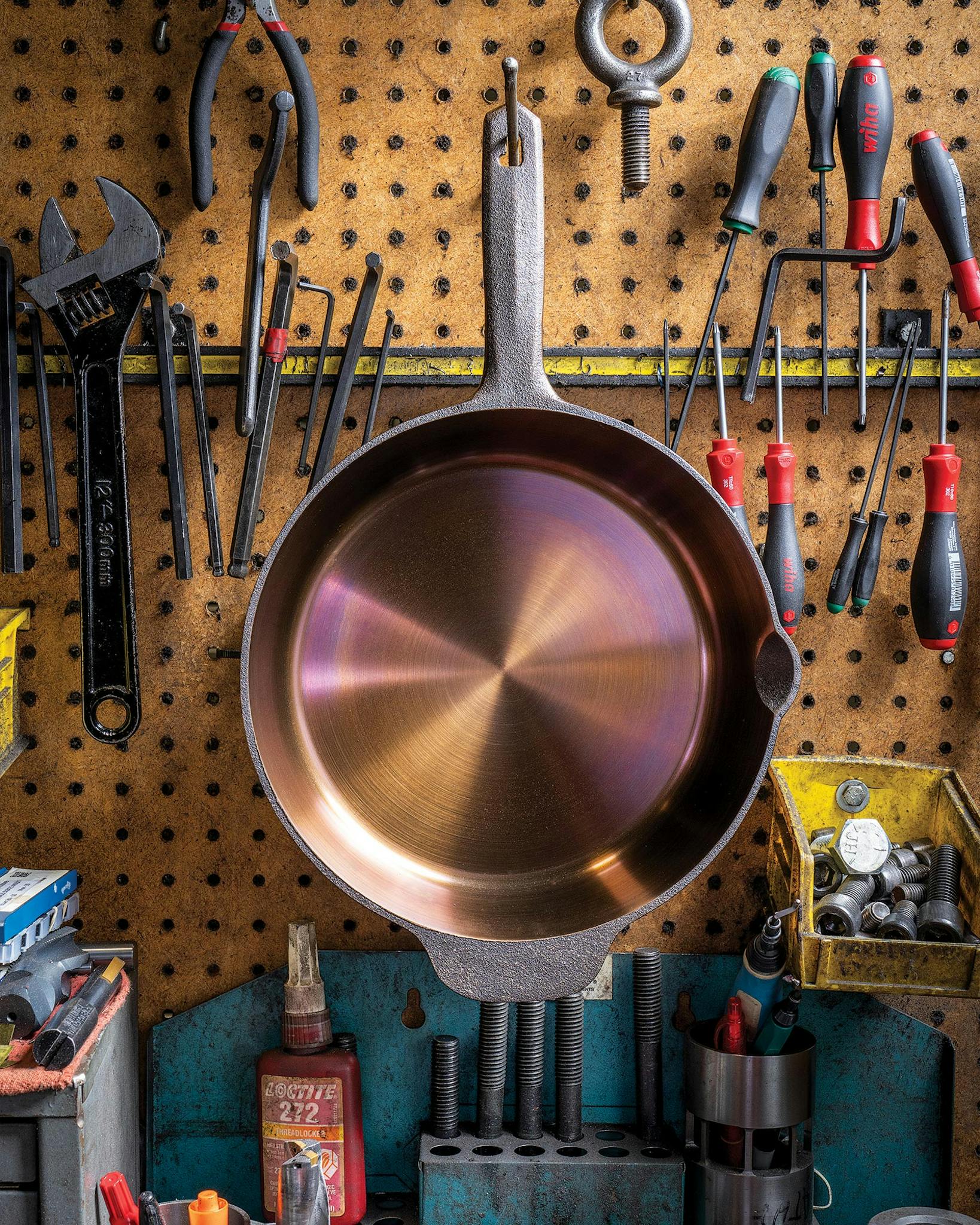
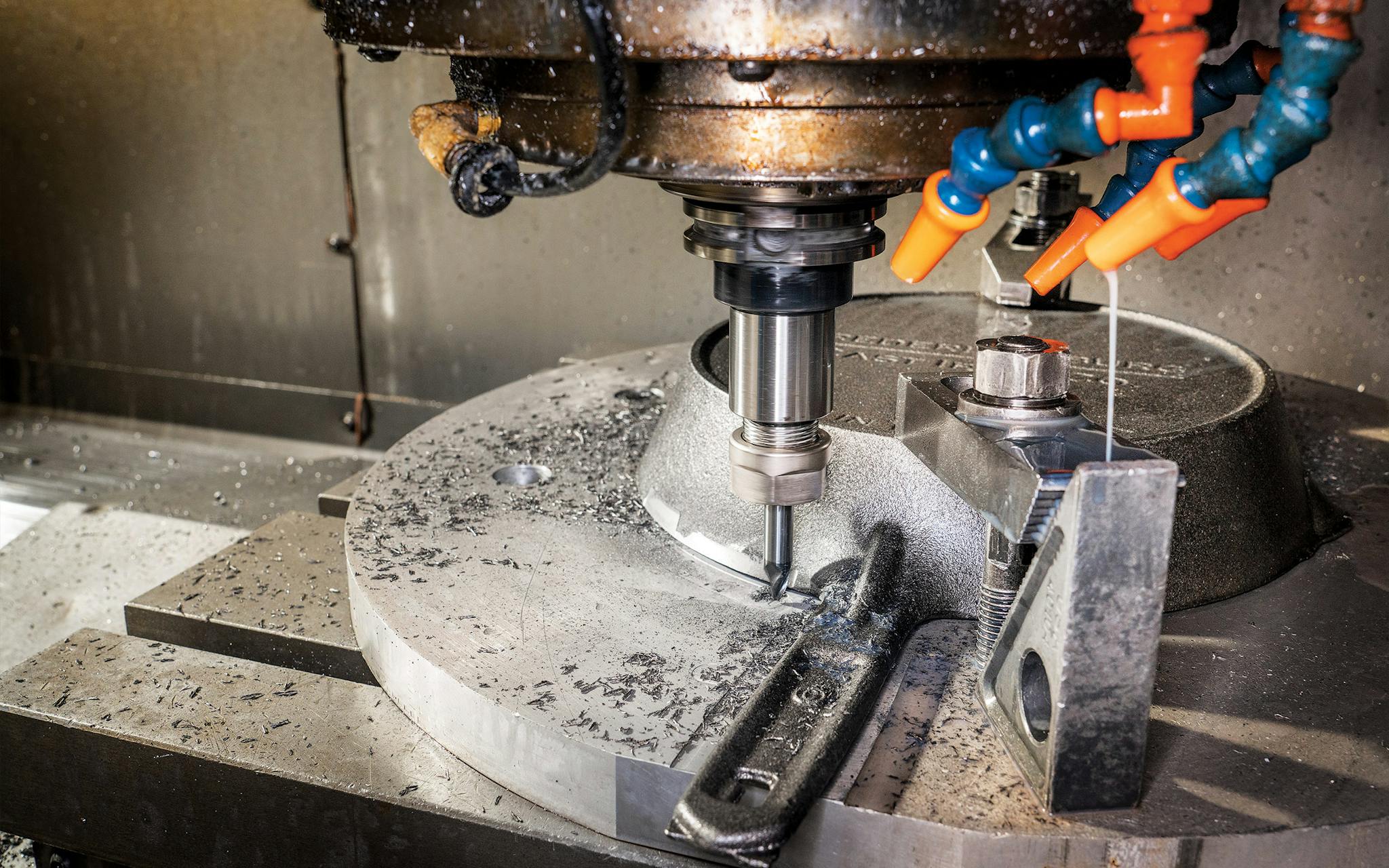
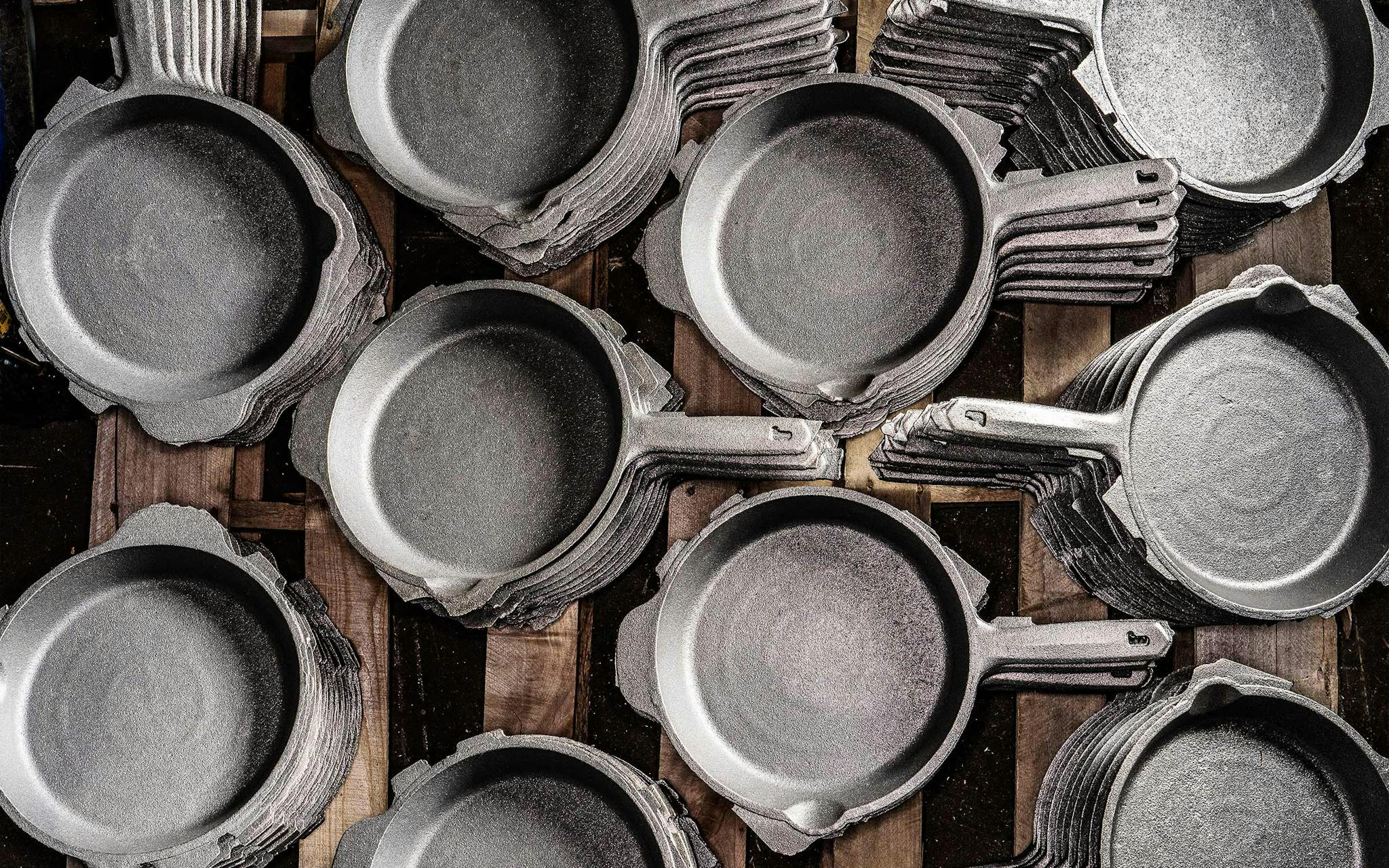

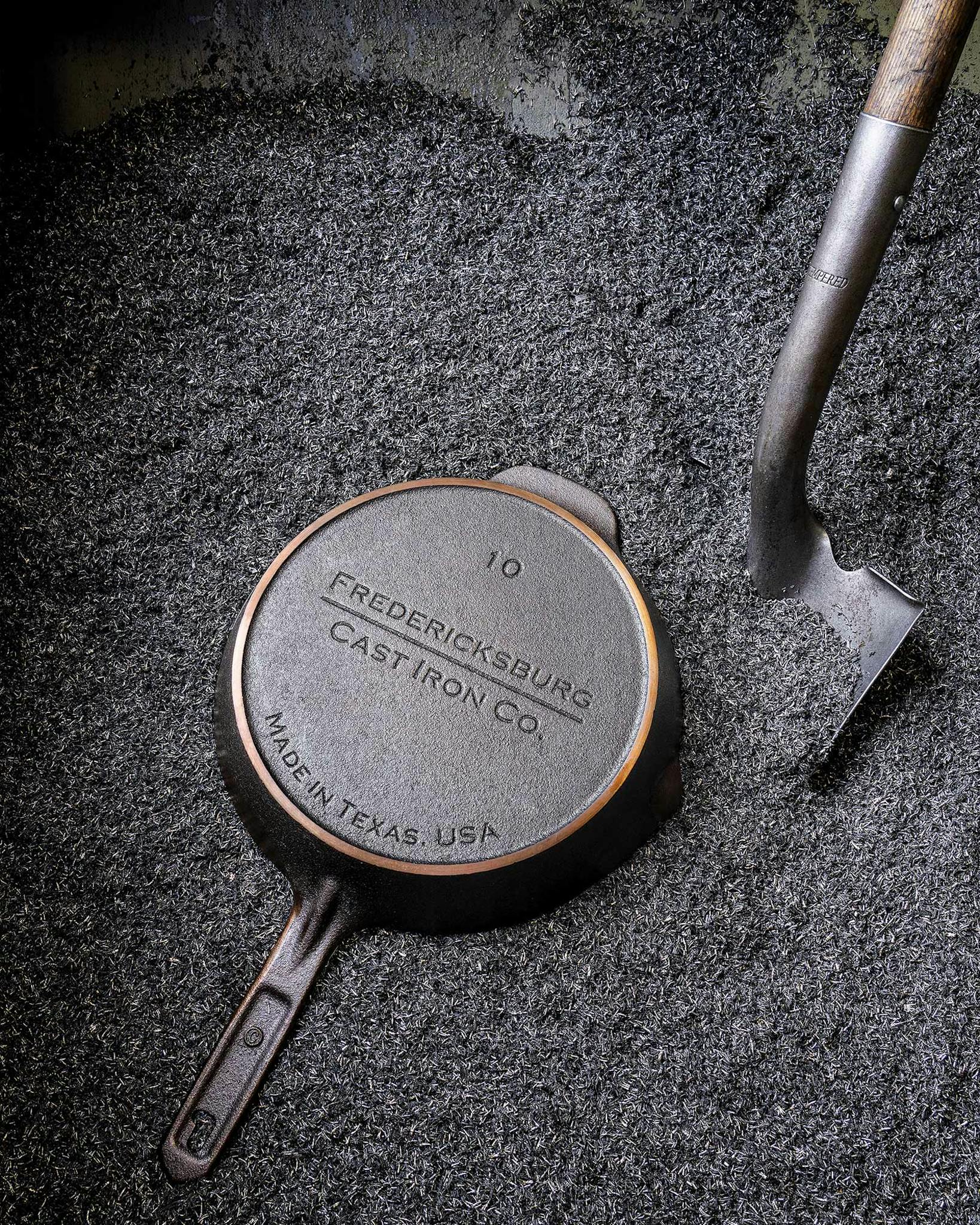
An abbreviated version of this article originally appeared in the May 2023 issue of Texas Monthly with the headline “Panning Out.” Subscribe today.
- More About:
- Style & Design
- Fredericksburg
